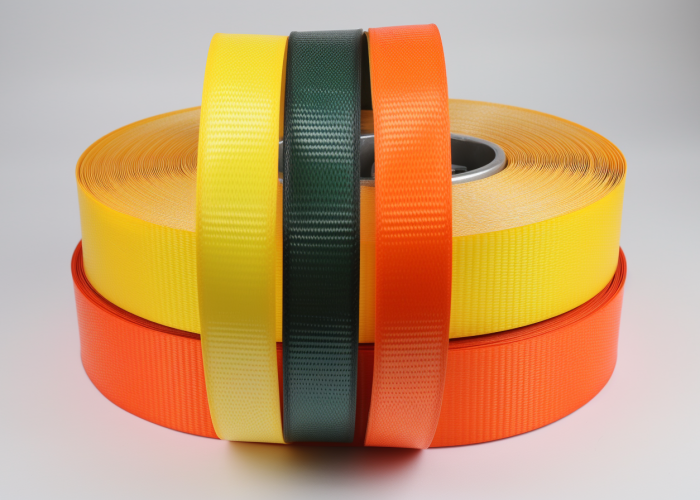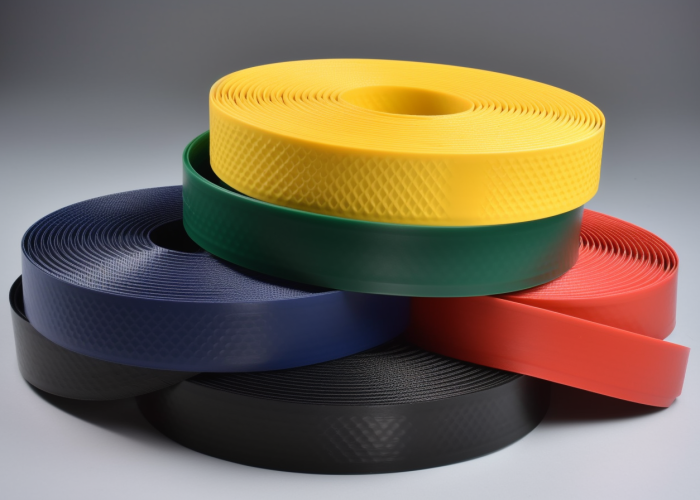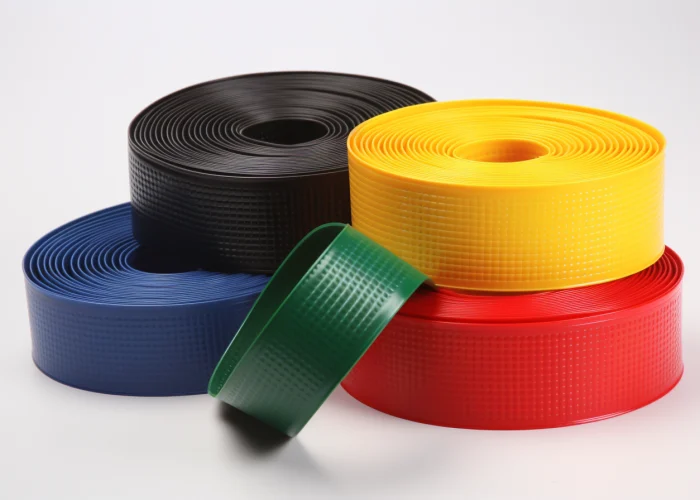Selecting the right waterproofing method for nylon webbing directly impacts your product’s performance in challenging environments. As experienced webbing manufacturers, we provide custom waterproofing solutions and engineering consultation to optimize your design requirements.
To make nylon webbing waterproof, apply PVC coating, polyurethane membrane, silicone treatment, or acrylic coating. PVC/PU coating with 0.1-0.3mm thick membranes provides the most effective long-term waterproofing, achieving virtually complete water penetration elimination and 5-10 mil protection strength.
Explore waterproofing technologies, performance data, and our custom engineering process to develop solutions tailored to your application needs


Webbing manufacturing expert with 15+ years of experience helping product developers build high-performance straps for industrial, medical, and outdoor use.
The most effective methods to waterproof nylon webbing include PVC/PU coating, silicone treatments, acrylic coatings, water-repellent chemical sprays, and membrane lamination systems. These proven manufacturing techniques create protective barriers through surface applications, chemical fiber modification, or laminated film layers, with effectiveness levels ranging from temporary water-resistance to permanent waterproof protection.
Quick Overview:
Surface coatings achieve 600-1,200 mm H₂O hydrostatic ratings through AATCC 127 testing. Acrylic coatings provide reliable water-resistance for backpack straps and utility belts, while silicone treatments offer superior flexibility for medical slings and lightweight carry straps. Both maintain protective properties for 2-3 years under normal conditions.
Chemical treatments create AATCC 22 compliant water repellency with contact angles exceeding 90 degrees. These lightweight spray applications maintain breathability while providing 6-12 month effectiveness with 100+ wash cycle durability, ideal for weight-critical consumer applications.
PU direct coating embeds polyurethane into webbing fibers through dip-coating processes, achieving 1,500+ mm H₂O ratings while maintaining stretch characteristics. This method excels for outdoor climbing harnesses and fall protection lanyards requiring flexibility under load.
Membrane lamination bonds 0.1-0.3mm waterproof PU films to webbing surfaces, delivering 5,000+ mm H₂O ratings under ISO 811 testing. This film-backed construction provides absolute moisture barriers for marine safety equipment and industrial lifting applications, with 10,000+ abrasion cycle durability.
Performance optimization matches waterproofing methods to specific hydrostatic pressure requirements and compliance standards, achieving 25-40% performance improvements through engineering consultation during development phases.
Waterproofing Method Water Resistance Durability UV Resistance Flexibility Cost
PVC/PU Coating Excellent 5+ years Moderate Moderate High
Silicone Treatment Very High 2–3 years High High Medium
Chemical Spray Moderate 6–12 mo. Moderate High Low
Wax Coating Temporary <6 mo. High High Very Low
PVC/PU coating provides superior long-term performance through 0.1-0.3mm thick membrane applications that create water-tight seals bonding directly to webbing fibers, achieving virtually complete water penetration elimination per ASTM D751 hydrostatic pressure testing. This dual-polymer system combines PVC’s chemical resistance with polyurethane’s flexibility, delivering excellent waterproof ratings and extended durability compared to single-coating alternatives.
Quick Overview:
Membrane application technology creates long-lasting waterproof barriers through precise thickness control and direct substrate bonding. The 0.1-0.3mm thickness range provides optimal balance between protection and flexibility, with thinner applications maintaining webbing characteristics while thicker coatings maximize environmental resistance. This controlled application process ensures consistent coverage without compromising webbing strength properties.
Water-tight sealing occurs through chemical bonding between PVC/PU polymers and nylon fibers, creating molecular-level adhesion that prevents water migration at coating edges. Laboratory testing demonstrates virtually complete water penetration elimination under ASTM D751 hydrostatic pressure protocols, with performance maintained across temperature ranges from -40°C to +80°C.
Long-term durability results from the dual-polymer system’s resistance to UV degradation, chemical exposure, and mechanical abrasion. PVC provides excellent chemical resistance while polyurethane contributes flexibility and tear resistance. Field testing shows >5-year performance retention in controlled conditions, significantly outperforming temporary water-resistant treatments requiring frequent reapplication.
Protection strength ratings of 5-10 mil (127-254 microns) demonstrate superior load-bearing capability while maintaining waterproof integrity per ASTM D751 testing protocols. This performance level supports safety-critical applications where coating failure could compromise equipment function. The coating system maintains these protection values throughout its service life without significant performance degradation under moderate mechanical wear.
Superior performance stems from the engineered polymer combination and precise application processes that create semi-permanent, flexible waterproof barriers suitable for demanding industrial and safety applications.

These coatings provide comprehensive environmental protection against chemical exposure, vapor penetration, bacteria growth, UV radiation, temperature extremes, and weather-related degradation for long-term performance in harsh conditions. Temperature-dependent characteristics and weather-resistant finishing options enable custom solutions for specific environmental challenges across diverse industrial applications.
Quick Overview:
Chemical resistance protects against acids, bases, solvents, and industrial chemicals that cause uncoated webbing degradation per ASTM D543 testing protocols. PVC coatings excel in chemical environments while polyurethane provides resistance to oils and fuels. This protection maintains webbing strength and appearance in manufacturing, marine, and industrial settings where chemical exposure is routine.
UV radiation protection prevents polymer chain breakdown and color fading through UV-stabilized coating formulations achieving >90% UV blocking capability. Advanced coatings include UV absorbers and hindered amine light stabilizers (HALS) that extend service life in outdoor applications. Testing shows sustained UV protection maintaining coating integrity for 5+ years under continuous sun exposure.
Bacterial and vapor resistance prevents microbial growth and moisture vapor transmission that compromise hygiene and performance. ISO 22196-tested antimicrobial additives create hostile environments for bacteria and fungi, essential for medical and food-contact applications. Vapor barriers prevent internal moisture accumulation that weakens webbing fibers over time.
Temperature performance maintains coating flexibility and adhesion across operational ranges from -40°C to +80°C per ASTM D2137 thermal cycling protocols. Low-temperature flexibility prevents cracking during cold exposure, while high-temperature stability prevents softening and flow. Thermal cycling validation confirms performance through repeated temperature variations typical of outdoor applications.
Environmental protection capabilities enable reliable performance in demanding conditions while extending webbing service life and reducing replacement costs across medical, food processing, and outdoor safety applications.
Performance differences between waterproofing methods range from temporary water-resistance to excellent permanent protection, with waterproof levels varying from good to extremely high, durability ratings from low to high, and UV flexibility characteristics from moderate to high per ASTM testing protocols. Summary table analysis shows PVC-coated solutions achieving excellent ratings while spray treatments provide good temporary protection.
Quick Overview:
Method Waterproof Level Durability UV Resistance Flexibility Typical Lifespan
PVC Coating Excellent High Moderate Moderate 5+ years
TPU Coating Very High High Moderate High 3–5 years
Silicone Treatment High Moderate High High 2–3 years
Chemical Spray Moderate Low Low–Moderate Very High 6–12 months
Wax-Based Treatment Basic Very Low High High <6 months
Waterproof level comparison shows distinct performance tiers per ASTM D751 testing. PVC-coated solutions achieve “excellent” ratings with virtually complete water penetration elimination, while silicone treatments reach “extremely high” performance. Chemical treatments provide “good” temporary protection, and wax-based applications offer basic water-resistance for tactical use.
Durability performance varies significantly per ASTM D4157 abrasion testing. High-durability membrane and PVC coatings maintain performance for 5+ years under controlled conditions. Moderate durability silicone treatments require 2-3 year reapplication. Low-durability chemical sprays and wax treatments need 6-12 month renewal cycles.
UV flexibility characteristics per ASTM G154 and D2176 testing determine outdoor suitability. High ratings apply to silicone and wax treatments maintaining performance under sun exposure and repeated flexing. Moderate ratings characterize PVC systems balancing protection with flexibility. Low flexibility acrylics may crack under stress but offer superior chemical resistance.
Protection strength metrics provide quantifiable data per ASTM D751 testing. PVC-coated webbing achieves 5-10 mil (127-254 microns) protection strength for heavy-duty industrial applications. Standard ratings apply to other methods, matched to specific application requirements and environmental conditions.
Performance selection balances waterproof effectiveness, durability expectations, flexibility requirements, and cost considerations for optimal value in industrial, medical, or tactical applications.
Waterproof treatments should be applied following thorough webbing preparation, even spray coverage techniques, 24-48 hour drying specifications per ASTM D1640 protocols, and two thin coats methodology for optimal adhesion and performance. Quality control processes ensure proper coating thickness, complete coverage, and adequate curing time to achieve specified waterproof ratings and long-term durability.
Quick Overview:
Webbing preparation requires complete cleaning per ASTM D2093 standards to remove oils, dirt, and manufacturing residues that interfere with coating adhesion. Surface preparation involves degreasing with appropriate solvents and ensuring complete dryness before treatment application. Proper preparation prevents coating failure and ensures specified waterproof performance.
Even spray coverage maintains consistent coating thickness per ASTM D823 guidelines, preventing weak points that compromise waterproof integrity. Controlled application uses overlapping spray patterns with 50% overlap ratios to eliminate coverage gaps. Spray distance and pressure settings are optimized for each coating type to achieve uniform distribution.
Drying time specifications of 24-48 hours at 20-25°C per ASTM D1640 protocols ensure complete solvent evaporation and polymer cross-linking. Optimal conditions are 20-25°C and 45-65% relative humidity. Forced drying at elevated temperatures may compromise coating flexibility and adhesion.
Two thin coats methodology provides superior performance per ASTM D823 guidelines by ensuring better penetration, adhesion, and uniform coverage. The first coat penetrates webbing fibers providing base adhesion, while the second creates the primary waterproof barrier. Inter-coat drying time of 4-6 hours prevents solvent entrapment between layers.
Quality control verifies coating thickness using ASTM D1212 mil gauge measurements, tests adhesion through ASTM D3359 tape tests, and validates waterproof performance through ASTM D751 protocols ensuring optimal results meeting specification requirements.

Manufacturing expertise optimizes design requirements through custom solution development, early-stage consultation identifying optimal approaches, engineering collaboration balancing performance with cost, and design optimization opportunities leveraging production knowledge. This technical partnership approach enhances product performance by integrating manufacturing insights during development rather than after specification finalization.
Quick Overview:
Custom solution development addresses unique performance requirements through specialized coating formulations, application methods, and ASTM-compliant testing protocols. This process evaluates environmental conditions, load requirements, flexibility needs, and durability expectations to create optimized waterproofing systems while maintaining cost-effectiveness.
Early-stage consultation identifies optimal waterproofing approaches before design finalization, preventing costly specification changes and performance compromises. Manufacturing expertise reveals design considerations that impact coating adhesion, durability, and performance per industry standards while optimizing material selection and processing parameters.
Engineering collaboration balances performance requirements with cost targets and manufacturing constraints through iterative design optimization. Technical expertise identifies opportunities to enhance performance without proportional cost increases, or reduce costs while maintaining essential performance characteristics for superior value.
Design optimization opportunities emerge from manufacturing knowledge of material interactions, processing limitations, and performance trade-offs validated through ASTM testing protocols. Production expertise reveals alternative approaches that may exceed original design concepts while improving manufacturability and identifying performance enhancements.
Technical partnership provides ongoing support from initial concept through production validation, ensuring optimal integration of waterproofing systems with overall product design for superior market performance in industrial, medical, and specialized applications.
Custom solutions include industry-specific coating formulations, specialized treatment options for unique environmental demands, flexible minimum order quantities with optimized lead times, and comprehensive quality assurance protocols with custom specification development per relevant ASTM standards. Testing processes validate performance against application-specific requirements ensuring reliable operation in demanding conditions.
Quick Overview:
Industry-specific formulations address unique performance requirements across medical devices meeting ISO 10993 biocompatibility standards, marine equipment tested per AATCC 127 protocols, automotive components per SAE standards, and aerospace applications. Medical-grade coatings provide ISO 22196-tested antimicrobial properties while marine formulations resist salt water and UV exposure per ASTM G154 testing.
Environmental customization creates specialized treatments for extreme conditions including chemical resistance per ASTM D543 testing, temperature performance from -60°C to +150°C validated through ASTM D2137 protocols, and enhanced UV protection for desert or high-altitude applications. Custom formulations incorporate specific additives addressing unique challenges while maintaining core waterproof performance.
Flexible manufacturing accommodates orders from 100-meter prototype quantities to million-meter production runs through scalable processes. Development lead times range from 2-4 weeks for standard modifications to 6-12 weeks for completely new formulations requiring extensive ASTM validation testing. Production scheduling optimizes delivery timing with customer requirements.
Quality assurance protocols include custom testing procedures validating specific performance criteria per ASTM D751. Testing options include ASTM D4329 accelerated aging, ASTM D543 chemical resistance evaluation, ASTM D2137 temperature cycling, and application-specific stress testing. Documentation packages provide complete traceability and performance validation for regulatory compliance.
Custom solutions ensure optimal waterproofing performance for specialized applications while maintaining manufacturing efficiency and quality consistency throughout production volumes in medical, marine, automotive, and aerospace industries.
Waterproofing nylon webbing requires selecting the optimal method based on performance requirements, environmental conditions, and durability expectations. PVC/PU coating delivers superior long-term protection, while chemical treatments offer lightweight alternatives. Proper application techniques and quality control ensure specified performance. Contact us to explore manufacturing solutions tailored to your waterproof webbing requirements.
Water-repellent spray treatments should be reapplied every 6-12 months depending on environmental exposure and usage intensity. Heavy-use applications in harsh conditions may require reapplication every 3-6 months, while indoor or light-duty applications can extend to 12-18 months between treatments.
PU (polyurethane) maintains superior flexibility in freezing conditions compared to PVC, remaining pliable at temperatures as low as -40°C. PVC becomes stiff and may crack below -20°C, while PU retains elasticity and bend resistance in extreme cold applications.
No, applying waterproofing spray to coated webbing is not recommended as it may compromise adhesion and create delamination issues. Coated webbing already has permanent waterproof protection, and additional spray treatments can interfere with the existing coating’s performance and durability.
Chemical spray treatments cost 15-25% less than coating applications, while PVC/PU coating systems cost 20-40% more than untreated webbing. Long-term cost analysis favors permanent coating systems due to reduced maintenance and reapplication requirements over 5+ year service life.
Properly applied waterproofing typically maintains 90-95% of original webbing strength when applied according to manufacturer specifications. PU coating may slightly reduce flexibility while PVC coating can increase stiffness, but both maintain essential load-bearing characteristics for safety-critical applications.
Waterproof webbing for lifting applications must meet OSHA 1926.251 standards and ASME B30.9 requirements for rigging hardware. Additional testing per ASTM D6775 validates load capacity retention after waterproofing treatment to ensure safety performance is not compromised.